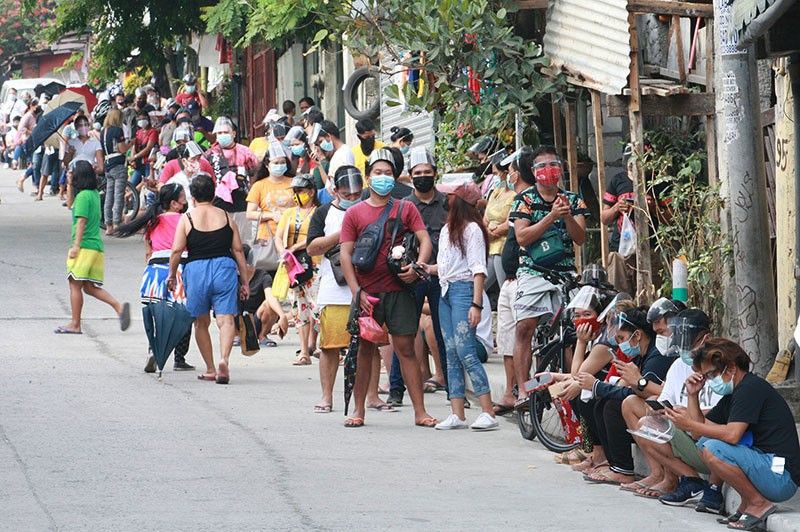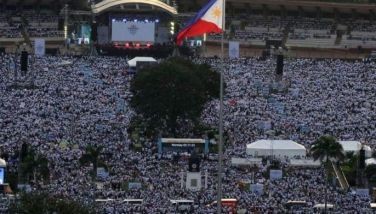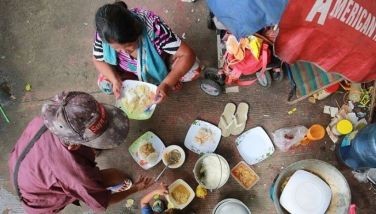COVID-19 fatality rate in Metro Manila rises to 5.4% – OCTA

MANILA, Philippines — The number of people dying of the coronavirus disease in Metro Manila has increased three-fold in recent weeks, OCTA Research Group revealed yesterday.
Citing data from the Department of Health (DOH), the group noted that the case fatality rate (CFR) in the National Capital Region (NCR) was at 5.36 percent from March 28 to April 13, up from 1.82 percent recorded since the pandemic started.
CFR refers to the number of people who died out of the total number of COVID-19 cases.
Comparing the data before and after March 28, OCTA said there was a significant increase in the number of people who died in the 65 and up age group (11.8 percent to 28.6 percent), 60 to 64 (5.7 percent to 16.4 percent) and 50 to 59 (2.7 percent to 8.7 percent).
“While the more recent CFR is based on a much smaller sample size of 284 deaths, and the CFR may still decrease as more data come in, the possibility of an increase in CFR should not be ignored,” read OCTA’s report.
“The reasons for the increase in CFR may be due to an overwhelmed hospital system, the presence of SARS-CoV-2 variants which may be more lethal or both,” it added.
OCTA recommended that senior citizens should be given priority to health care access to be assured that they receive timely interventions.
It also urged seniors who have not applied for vaccination to strongly reconsider getting inoculated as soon as possible, stressing the high risk of mortality due to COVID-19.
“Those in the vulnerable sector should strictly adhere to public health guidelines and exercise extreme caution, especially in public areas, to avoid COVID-19 infection,” it added.
OCTA fellow Michael Tee said the government must allocate additional resources to take care of those who are infected. “We cannot afford to wait for them to deteriorate in their houses before bringing them to hospital,” he said.
‘Super spreader’ events
Health authorities raised concern yesterday that the vaccination drive and distribution of cash aid to needy families might turn out to be “super spreader events” for COVID-19.
“This is a possible super spreader event especially if there is crowding and the space is enclosed,” warned Department of Health (DOH) Undersecretary Maria Rosario Vergeire at a press briefing.
A super spreader event pertains to the gathering of people and where a single infection triggers a large outbreak among the attendees and their contacts.
Vergeire emphasized this could happen during vaccination and cash assistance distribution activities if people will not strictly observe physical distancing.
The DOH has coordinated with the Department of the Interior and Local Government (DILG) and the Metropolitan Manila Development Authority (MMDA) to make sure that health protocols are strictly implemented at these events.
“We also reminded our local government units to have ‘scheduling’ to prevent mass gathering during these events,” Vergeire said.
‘Arrest them’ – Diño
Earlier, DILG Undersecretary Martin Diño said beneficiaries of the lockdown assistance who would line up at distribution centers before their scheduled time should be arrested because they are violating quarantine protocols.
Diño said that he has tasked barangay officials to give out coupons with assigned time slots to ensure that proper protocols will be followed at distribution centers.
“Now if they come earlier, arrest them. Why? They’ve violated social distancing. Why would you come before daybreak when you’re schedule is 6 a.m., 7 a.m.,” he said over radio dzBB on Tuesday.
There have been reports of social distancing violations as people flocked to centers for the payout of lockdown assistance.
Clustering prevails
Meanwhile, Vergeire said that clustering of COVID-19 cases is still found in the community and in workplaces and institutions.
She claimed there has also been no decline in cases despite the imposition of enhanced community quarantine (ECQ) and now the modified ECQ in Metro Manila and its adjoining provinces of Bulacan, Laguna, RIzal and Cavite or the so-called National Capital Region (NCR) Plus bubble.
“We are not seeing a reduction in cases. We are still averaging 10,000 to 11,000 cases per day. We foresee that this may still persist in the coming days,” Vergeire said.
But she said a decline in cases is expected to reflect on the daily tally of cases in the next two weeks.
Out of context
Sought for reaction on the pronouncement of vaccine czar Carlito Galvez Jr. on a possible mid-year surge of COVID-19 cases, Vergeire maintained that Galvez was “taken out of context.”
“What he was saying is that we must always be ready for any possible circumstance wherein cases will increase in the coming months,” she said.
Vergeire added that preparations pertain to the extension of facilities, hiring of health care workers and augmenting the capacity of facilities, among others. – Sheila Crisostomo, Romina Cabrera
- Latest
- Trending





























